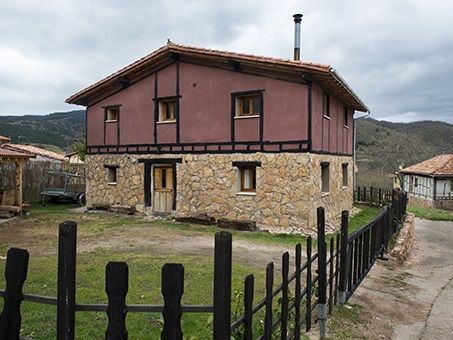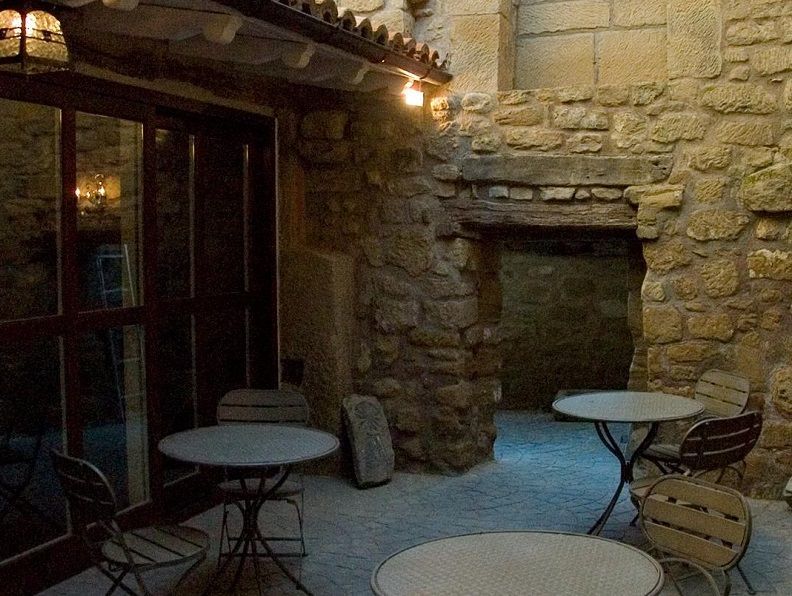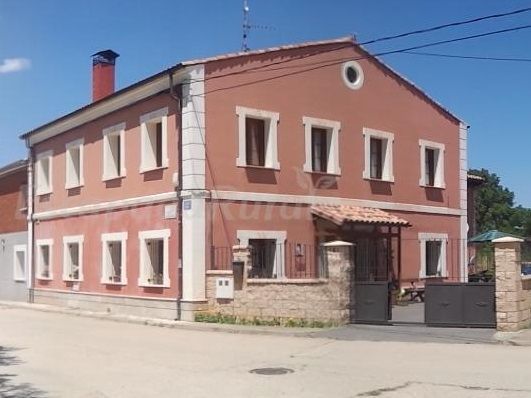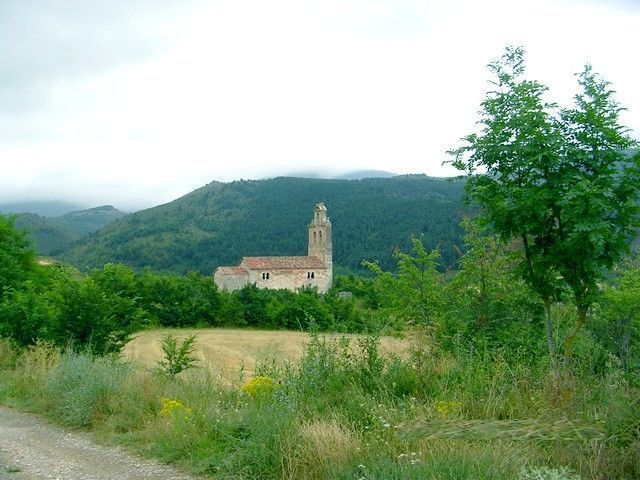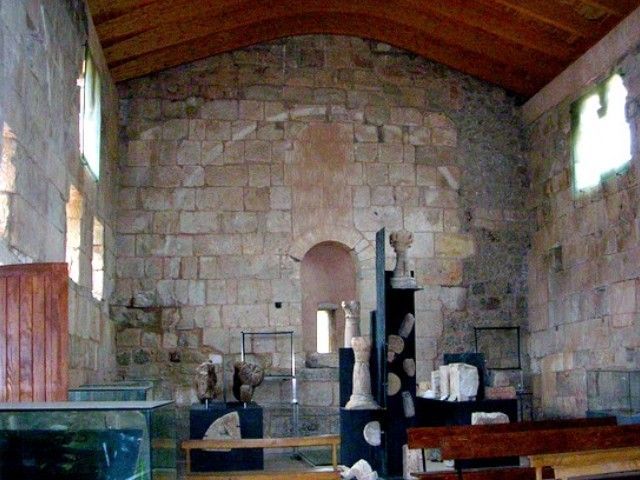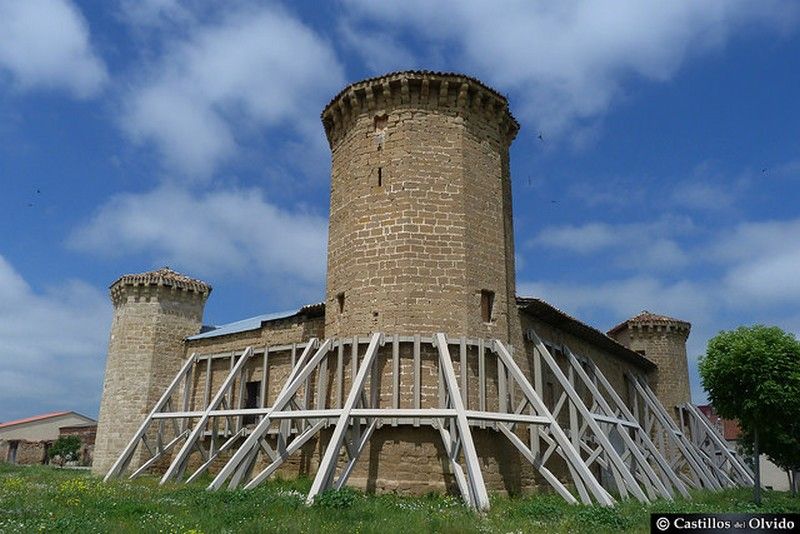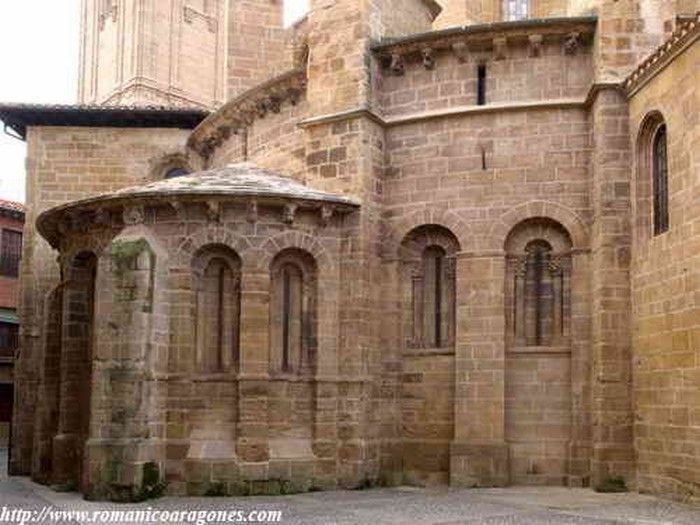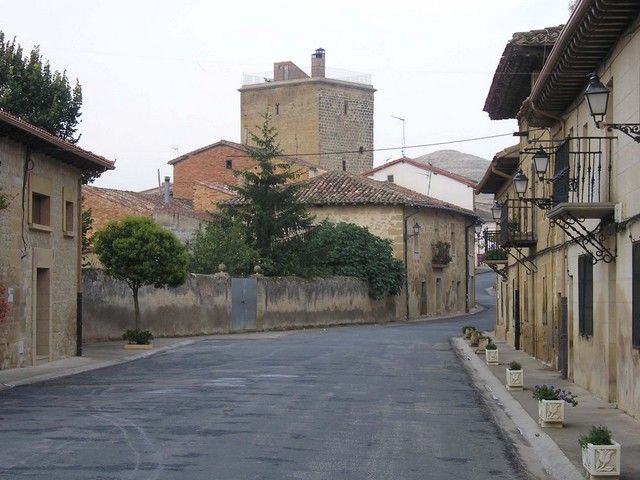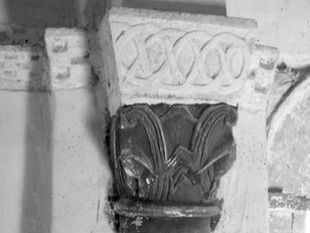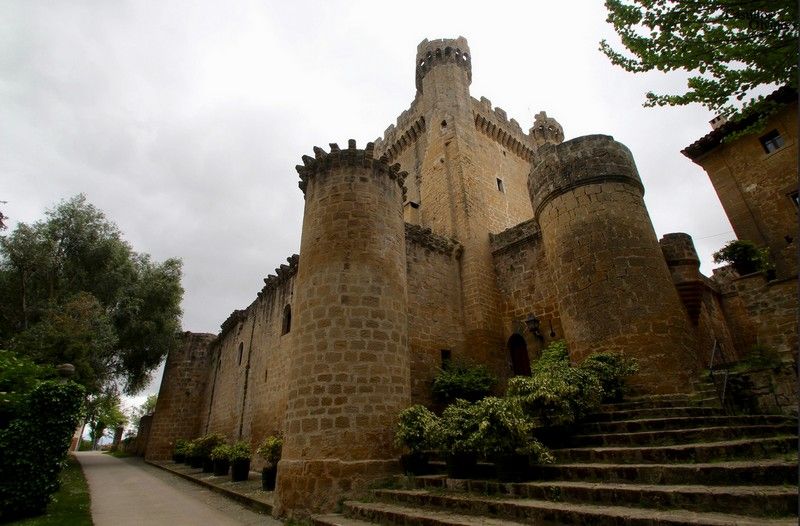SAN VICENTE DEL VALLE

Thanks:
With our most sincere thanks to our friend Juan Antonio Alonso, a “good man and true” from Burgos, keen on Pre Romanesque Art, who has let us know this interesting Visigothic building, providing the information and photographs used in this file.
Previous notes
- Studied and restored after the fire on its roof in 1986.
- Very atypical buildng, possibly of Late Roman origin, modified in the 7th century and turned into a church during the repopulation, around the year 900.
Description
In the eastern sector of the province of Burgos, located in the northern foothills of Sierra de la Demanda, we find this construction from Visigothic times, very little known but, considering its excellent state of preservation and special features, seems to be of great interest to get to know the Architecture of those times, from which, unfortunately, very little has reached to our days.
It is a building of rectangular plan with only one nave of great proportions, that has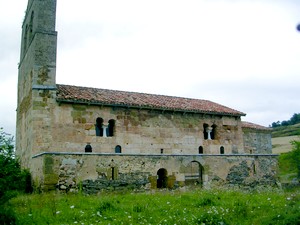 preserved its original structure and a square chevet facing northeast, from the Mozarabic period, that probably replaced a previous one of smaller size. The nave is lightened by four simple rounded arch windows on the southernside and by two surprising sets of twin windows on each side, very highly placed, each one of them formed by two horseshoe arches separated by a column with capital and impost.
preserved its original structure and a square chevet facing northeast, from the Mozarabic period, that probably replaced a previous one of smaller size. The nave is lightened by four simple rounded arch windows on the southernside and by two surprising sets of twin windows on each side, very highly placed, each one of them formed by two horseshoe arches separated by a column with capital and impost.
During to a restoration after its roof went on fire in 1986, archeological excavations took place that date its foundation in Visigothic times, although some material from a previous Roman or Paleochristian building was used. However, two phases are distinguished, prior to the 8th century, clearly differentiated in its building: the first one of them, where the nave was built, with the lower windows and an apse, now disappeared, and a later one where the height of the nave was enlarged and the twin windows were opened much higher. Later on, in Mozarabic times -9th or 10th centuries- it seems it  became a monastery of a certain importance in the area, to which the present apse with three windows were added, covered with a dome and an interesting cornice decorated with vegetal and geometric motifs. Also in this phase the portico was added, preserved in a great part, formed by three compartments. A stoup has been found in the one facing the south and four column bases framing the entrance door in the central one. Already in the 13th century it went through a new modification, in the last times of Romanesque art, when the present door was added as well as the belfry and the apse’s entrance arch were modified.
became a monastery of a certain importance in the area, to which the present apse with three windows were added, covered with a dome and an interesting cornice decorated with vegetal and geometric motifs. Also in this phase the portico was added, preserved in a great part, formed by three compartments. A stoup has been found in the one facing the south and four column bases framing the entrance door in the central one. Already in the 13th century it went through a new modification, in the last times of Romanesque art, when the present door was added as well as the belfry and the apse’s entrance arch were modified.
During the same restoration, a tomb appeared placed at the feet of the nave, opposite the apse, that has been considered belonging to the first phase of the construction, together with a series of remains decorated from different periods that seem to us of great interest to analyse this building. In fact, whilst in its building diverse elements of the Roman period had been reutilized, amongst them many funeral steles, and later, already in the medieval period, its environment was used as a cemetery, from which several discoid steles have been preserved, only four capitals from the Visigothic period have appeared, upon the separation columns of the twin windows, thought to belong to the same workshop and from 6th or 7th centuries; some of them are surprising for containing human faces in a kind of sculpture unusual in Visigothic art.
Conclusions
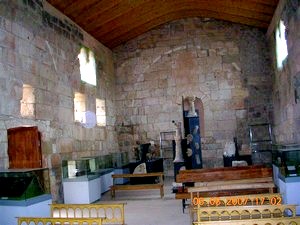 has been considered it belongs to an early Visigothic phase and that it was fitted out after the reconquest of the zone and utilized as a monsatery church, a situation that has been maintained to our days, after having gone through some modifications in the 13th century, contains a series of very unusual features in Visigothic architecture and totally contradictory with the examples of religious architecture of that period that we know today. Among those we can mention the following ones:
has been considered it belongs to an early Visigothic phase and that it was fitted out after the reconquest of the zone and utilized as a monsatery church, a situation that has been maintained to our days, after having gone through some modifications in the 13th century, contains a series of very unusual features in Visigothic architecture and totally contradictory with the examples of religious architecture of that period that we know today. Among those we can mention the following ones:- It does not face the east but the northeast.
- There are very few Visigothic churches formed by only one nave and an apse, and none of a great size.
- We do not know of any Visigothic church with two rows of windows at different height.
- The arches of the lower windows are rounded whereas the upper ones are horseshoe arches, what seems to indicate that the original building is of a former period and that the upper part of the walls belongs to the Visigothic period.
- There are very few churches of that period with their main entrance at one side, and
 those of Northafrican type are located in the southern half of Spain.
those of Northafrican type are located in the southern half of Spain. - Among the remains with decorations that have appeared, only the four capitals of the windows are considered as Visigothic; however there is a lot of pieces of previous periods.
For all that, an option to bear in mind the moment to analyse the probable building phases and the utilization of this building, would be the one that estimates it belongs to the Roman or Paleochristian period -the landscape is very adequate for a Roman villa- to which belongs the lower part of the walls with the rounded arch windows. At the end of the 6th century or along the 7th century it may have been rebuilt or enlarged, although also in this case as a civil building, as its structure does not have anything in common with a Visigothic church and it is too open for a military construction.
The only precedent from the Visigothic period we can turn to to find a structure of this kind are the remains of the palace ofRecópolis. From this palace, which only keeps the plan up to an approximate height of 1 meter, there is a theoretical reconstruction that we think it to be adquate. It was built in times of Leovigildo and consisted of a rectangular building of more than 130m long by 9m wide, distributed in adjacent naves, all of them of two levels, according to that reconstruction, and with windows in both plans. There is an important difference with the nave of San Vicente del Valle, because in Recópolis a series of central pillars were used to support the gabled roof, that are not shown here, which could be explained as it was a nave of much lesser length, or for a bigger development of the building techniques, as the enlargement of San Vicente probably took place one century after. If we accept this possibility, the church of Santa María del Valle would have been a two storey civilian building in its Visigothic version, possibly the palace of a large rural piece of land or of a small city. To support this theory we recall that the other city we know the Visigothics founded in Spain was Vitoriacum, i.e.: Vitoria, just 107 Km to the north of San Vicente del Valle, so it does not seem at all preposterous to think that in this place, located between that city and the Spanish area most populated by the Gothics, a Visigothic centre of some importance may have existed.
built in times of Leovigildo and consisted of a rectangular building of more than 130m long by 9m wide, distributed in adjacent naves, all of them of two levels, according to that reconstruction, and with windows in both plans. There is an important difference with the nave of San Vicente del Valle, because in Recópolis a series of central pillars were used to support the gabled roof, that are not shown here, which could be explained as it was a nave of much lesser length, or for a bigger development of the building techniques, as the enlargement of San Vicente probably took place one century after. If we accept this possibility, the church of Santa María del Valle would have been a two storey civilian building in its Visigothic version, possibly the palace of a large rural piece of land or of a small city. To support this theory we recall that the other city we know the Visigothics founded in Spain was Vitoriacum, i.e.: Vitoria, just 107 Km to the north of San Vicente del Valle, so it does not seem at all preposterous to think that in this place, located between that city and the Spanish area most populated by the Gothics, a Visigothic centre of some importance may have existed.
Whatever, we think it is obvious that this building of San Vicente del Valle, so little known, for its special fearures and for being, maybe, the only Visigothic civilian construction that still stands, deserve a special attention, much more than what it has gotten so far, and, of course, a visit from those keen on Spanish Pre Romanesque Art.
Other interesting information
Visiting Hours: July-September: 11-14:00 and 15:00-20:00. Mondays closed. 947 58.61.08
Bibliography
Historia de España de Menéndez Pidal: Tomo III
San Vicente del Valle:
Daniel Gómez Martínez
Iglesia de La Asunción (San Vicente del Valle –
Burgos): Caja de Burgos
Portals




